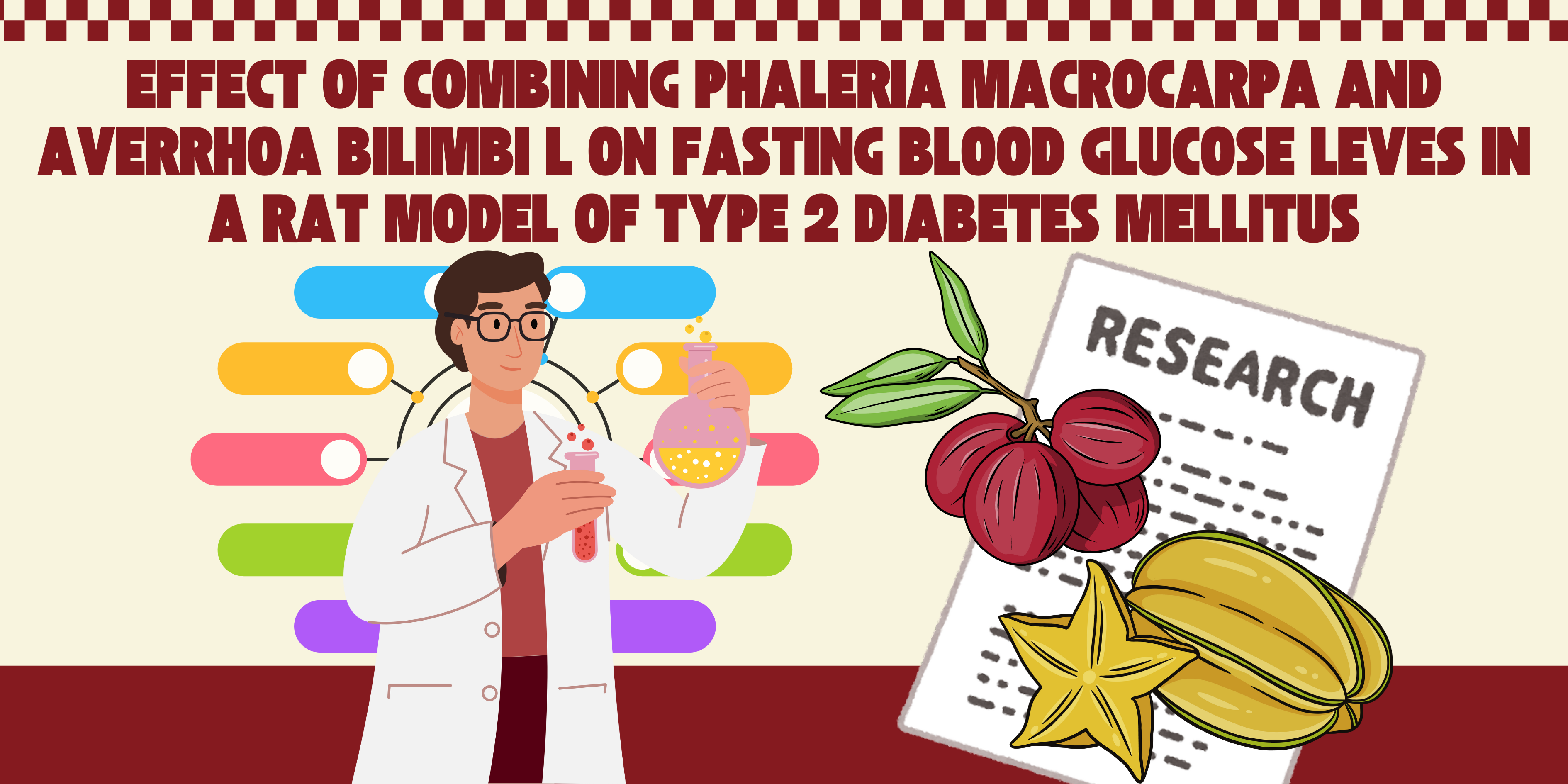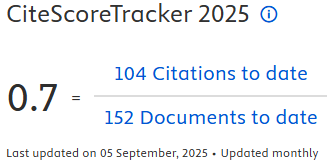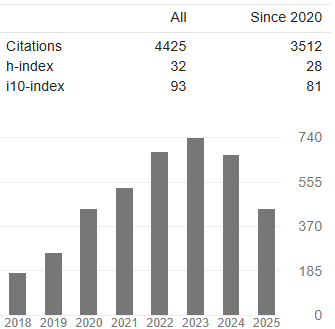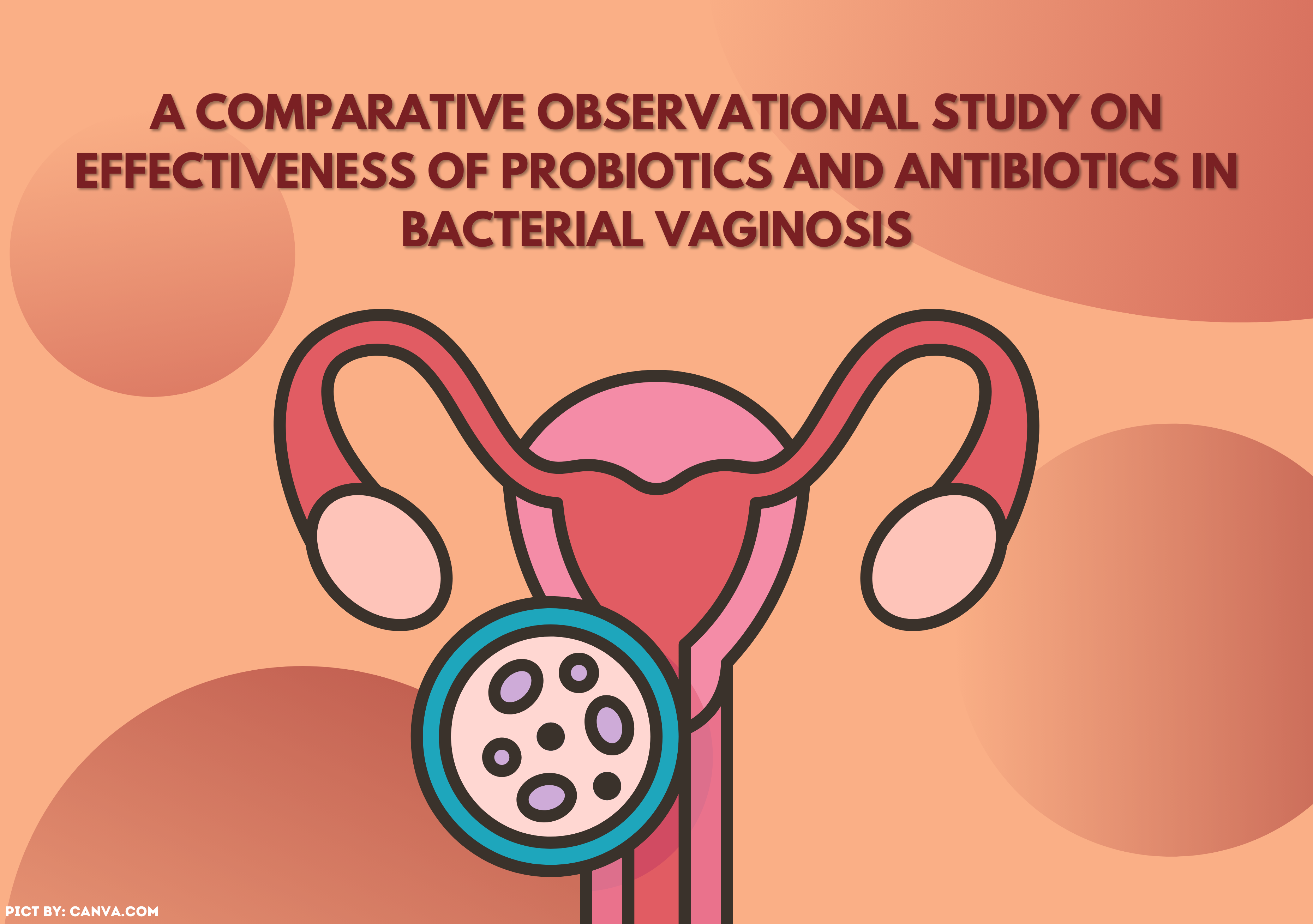EFFECT OF COMBINING PHALERIA MACROCARPA AND AVERRHOA BILIMBI L ON FASTING BLOOD GLUCOSE LEVES IN A RAT MODEL OF TYPE 2 DIABETES MELLITUS

Downloads
Introduction: Diabetes is a serious problem, and a solution is being sought. Traditional ingredients have been proven to contain many substances that can be used to prevent and treat diabetes. This study aimed to investigate the effects of a combination of Phaleria macrocarpa and Averrhoa bilimbi L extracts on fasting blood glucose levels. Methods: A randomized, post-test-controlled group design was used. Type 2 diabetes mellitus was induced in 36 Sprague Dawley rats by feeding them a high-fat diet for 2 weeks, followed by the administration of streptozotocin and nicotinamide to induce type 2 Diabetes Mellitus. The rats were divided into six groups: CN, C-, C+, T1, T2, and T3. The treatment was administered for 21 days, and fasting blood glucose levels were measured. The data were analyzed using One-Way ANOVA with post-hoc Tukey's HSD test. Results: The combined dose of Phaleria macrocarpa and Averrhoa bilimbi Lextract effectively reduced fasting blood glucose levels over a 21-day period. Group T1 demonstrated the highest efficacy and did not differ significantly from that of the C+ group. The effective dosage that influenced fasting blood glucose levels was a combination of Phaleria macroca at 750 mg/kg W/day and Averrhoa bilimbi L at 375 mg/kg. Conclusion: Phaleria macrocarpa and Averrhoa bilimbi L extract have a synergistic effect that makes them a promising natural medication for controlling blood glucose levels. Further investigation is required to investigate the underlying mechanisms and assess the long-term consequences of this combination therapy.
Agustin, E., Insanu, M. and Mauludin, R., 2023. Improvement in Pharmacological Activity of Mahkota Dewa (Phaleria macrocarpa (Schef. Boerl)) Seed Extracts in Nanoemulsion Dosage Form: In vitro and In vivo Studies. Pharmaceutical Nanotechnology, 12(1), pp.90–97. https://doi.org/10.2174/2211738511666230602100045
Ahmed, B., Sultana, R. and Greene, M.W., 2021a. Adipose tissue and insulin resistance in obese. Biomedicine & Pharmacotherapy, 137, p.111315. https://doi.org/10.1016/j.biopha.2021.111315
Ahmed, B., Sultana, R. and Greene, M.W., 2021b. Adipose tissue and insulin resistance in obese. Biomedicine and Pharmacotherapy, 137(February), pp.1–13. https://doi.org/10.1016/j.biopha.2021.111315
Alam, S., Hasan, K., Neaz, S., Hussain, N., Hossain, Md.F. and Rahman, T., 2021. Diabetes Mellitus: Insights from Epidemiology, Biochemistry, Risk Factors, Diagnosis, Complications and Comprehensive Management. Diabetology, 2(2), pp.36–50. https://doi.org/10.3390/diabetology2020004
Alam, S., Sarker, Md.M.R., Sultana, T.N., Chowdhury, Md.N.R., Rashid, M.A., Chaity, N.I., Zhao, C., Xiao, J., Hafez, E.E., Khan, S.A. and Mohamed, I.N., 2022. Antidiabetic Phytochemicals From Medicinal Plants: Prospective Candidates for New Drug Discovery and Development. Frontiers in Endocrinology, 13. https://doi.org/10.3389/fendo.2022.800714
Alara, O.R. and Olalere, O.A., 2016. A Critical Overview on the Extraction of Bioactive Compounds from Phaleria macrocarpa (Thymelaceae). Natural Products Chemistry & Research, 4(5). https://doi.org/10.4172/2329-6836.1000232.
Anderson, M., Powell, J., Campbell, K.M. and Taylor, J.R., 2014. Optimal management of type 2 diabetes in patients with increased risk of hypoglycemia. Diabetes, Metabolic Syndrome and Obesity, 7, pp.85–94. https://doi.org/10.2147/DMSO.S48896
Barber, E., Houghton, M.J. and Williamson, G., 2021. Flavonoids as Human Intestinal α-Glucosidase Inhibitors. Foods, 10(8), p.1939. https://doi.org/10.3390/foods10081939
Barky, A.R. El, Hussein, S.A., Alm-Eldeen, A.-E., Hafez, yehia A. and Mohamed, T., 2017. Saponins and their potential role in diabetes mellitus. Diabetes Management, 7(1), pp.148–158.
Chandrasekaran, P. and Weiskirchen, R., 2024. Cellular and Molecular Mechanisms of Insulin Resistance. Current Tissue Microenvironment Reports. https://doi.org/10.1007/s43152-024-00056-3
Choi, C.K., Yang, J., Jeong, J.-A. and Shin, M.-H., 2022. Effects of Diabetes Quality Assessment on Diabetes Management Behaviors Based on a Nationwide Survey. International Journal of Environmental Research and Public Health, 19(23), pp.1–11. https://doi.org/10.3390/ijerph192315781
Damasceno, D.C., Netto, A.O., Iessi, I.L., Gallego, F.Q., Corvino, S.B., Dallaqua, B., Sinzato, Y.K., Bueno, A., Calderon, I.M.P. and Rudge, M.V.C., 2014. Streptozotocin-induced diabetes models: Pathophysiological mechanisms and fetal outcomes. BioMed Research International, 2014(May), pp.1–11. https://doi.org/10.1155/2014/819065
David, P., Singh, S. and Ankar, R., 2023. A Comprehensive Overview of Skin Complications in Diabetes and Their Prevention. Cureus, 15(5), pp.1–8. https://doi.org/10.7759/cureus.38961
Farazi, M., Houghton, M.J., Nicolotti, L., Murray, M., Cardoso, B.R. and Williamson, G., 2024. Inhibition of human starch digesting enzymes and intestinal glucose transport by walnut polyphenols. Food Research International, 189, p.114572. https://doi.org/10.1016/j.foodres.2024.114572
Galicia-Garcia, U., Benito-Vicente, A., Jebari, S., Larrea-Sebal, A., Siddiqi, H., Uribe, K.B., Ostolaza, H. and Martín, C., 2020. Pathophysiology of type 2 diabetes mellitus. International Journal of Molecular Sciences, 21(17), pp.1–34. https://doi.org/10.3390/ijms21176275
Giri, B., Dey, S., Das, T., Sarkar, M., Banerjee, J. and Dash, S.K., 2018. Chronic hyperglycemia mediated physiological alteration and metabolic distortion leads to organ dysfunction, infection, cancer progression and other pathophysiological consequences: An update on glucose toxicity. Biomedicine and Pharmacotherapy, 107(April), pp.306–328. https://doi.org/10.1016/j.biopha.2018.07.157
Gray, L.R., Tompkins, S.C. and Taylor, E.B., 2014. Regulation of pyruvate metabolism and human disease. Cellular and Molecular Life Sciences, 71(14), pp.2577–2604. https://doi.org/10.1007/s00018-013-1539-2
IDF, 2022. Diabetes around the world in 2021. International Diabetes Federation.
Kurup, S.B. and Mini, S., 2017. Averrhoa bilimbi fruits attenuate hyperglycemia-mediated oxidative stress in streptozotocin-induced diabetic rats. Journal of Food and Drug Analysis, 25(2), pp.360–368. https://doi.org/10.1016/j.jfda.2016.06.007
Ludwig, D.S. and Ebbeling, C.B., 2018. The Carbohydrate-Insulin Model of Obesity. JAMA Internal Medicine, 178(8), p.1098. https://doi.org/10.1001/jamainternmed.2018.2933
Luyen, N.T., Ddang, N.H., Binh, P.T.X., Hai, N.T. and Dat, N.T., 2018. Hypoglycemic property of triterpenoid saponin PFS isolated from Polyscias fruticosa leaves. Anais da Academia Brasileira de Ciências, 90(3), pp.2881–2886. https://doi.org/10.1590/0001-3765201820170945
Mallek, A., Movassat, J., Ameddah, S., Liu, J., Semiane, N., Khalkhal, A. and Dahmani, Y., 2018. Experimental diabetes induced by streptozotocin in the desert gerbil, Gerbillus gerbillus, and the effects of short-term 20-hydroxyecdysone administration. Biomedicine & Pharmacotherapy, 102, pp.354–361. https://doi.org/10.1016/j.biopha.2018.03.070
Malm, C., Jakobsson, J. and Isaksson, A., 2019. Physical Activity and Sports—Real Health Benefits: A Review with Insight into the Public Health of Sweden. Sports, 7(5), p.127. https://doi.org/10.3390/sports7050127
Marzouk, M.M., 2016. Flavonoid constituents and cytotoxic activity of Erucaria hispanica (L.) Druce growing wild in Egypt. Arabian Journal of Chemistry, 9, pp.S411–S415. https://doi.org/10.1016/j.arabjc.2011.05.010
Mata-Torres, G., Andrade-Cetto, A. and Espinoza-Hernández, F., 2021. Approaches to Decrease Hyperglycemia by Targeting Impaired Hepatic Glucose Homeostasis Using Medicinal Plants. Frontiers in Pharmacology, 12. https://doi.org/10.3389/fphar.2021.809994
Meckawy, R., Stuckler, D., Mehta, A., Al-Ahdal, T. and Doebbeling, B.N., 2022. Effectiveness of early warning systems in the detection of infectious diseases outbreaks: a systematic review. BMC Public Health, 22(1), p.2216. https://doi.org/10.1186/s12889-022-14625-4.
Muhlishoh, A., Wasita, B. and Patriado Nuhriawangsa, A.M., 2019. Antidiabetic effect of Centella asiatica extract (whole plant) in streptozotocin nicotinamide-induced diabetic rats. Jurnal Gizi dan Dietetik Indonesia (Indonesian Journal of Nutrition and Dietetics), 6(1), p.14. https://doi.org/10.21927/ijnd.2018.6(1).14-22
Mutiarahmi, C.N., Hartady, T. and Lesmana, R., 2021. Use of Mice as Experimental Animals in Laboratories that Refer to The Principles of Animal Welfare: a Literature Review. Indonesia Medicus Veterinus, 10(1), pp.134–145. https://doi.org/10.19087/imv.2020.10.1.134
Nuari, N.A., Rahman, H.F. and Wahid, A.H., 2022. Understanding the links between glycemic control, management adherence and hemoglobin level among type 2 diabetes mellitus. International journal of health sciences, 6(2), pp.1013–1022. https://doi.org/10.53730/ijhs.v6n2.9974
Padhi, S., Nayak, A.K. and Behera, A., 2020. Type II diabetes mellitus: a review on recent drug based therapeutics. Biomedicine and Pharmacotherapy, 131, p.110708. https://doi.org/10.1016/j.biopha.2020.110708.
Park, H.J., Jang, H.R., Park, S.Y., Kim, Y.B., Lee, H.Y. and Choi, C.S., 2020. The essential role of fructose-1,6-bisphosphatase 2 enzyme in thermal homeostasis upon cold stress. Experimental and Molecular Medicine, 52(3), pp.485–496. https://doi.org/10.1038/s12276-020-0402-4
Pendit, P.A.C.D., Zubaidah, E. and Sriherfyna, F.H., 2016. Physical-Chemistry Characteristics and Antibacterial Activity of Bilimbi (Averrhoa bilimbi L.) Leaves Extract. Jurnal Pangan dan Agroindustri, 4(1), pp.400–409.
Petersen, M.C. and Shulman, G.I., 2018. Mechanisms of Insulin Action and Insulin Resistance. Physiological Reviews, 98(4), pp.2133–2223. https://doi.org/10.1152/physrev.00063.2017
Prasad-Reddy, L. and Isaacs, D., 2015. A clinical review of GLP-1 receptor agonists: Efficacy and safety in diabetes and beyond. Drugs in Context, 4, pp.1–19. https://doi.org/10.7573/dic.212283
Salehi, B., Ata, A., Kumar, N.V.A., Sharopov, F., Ramírez-Alarcón, K. and Ruiz-Ortega, N., 2019. Antidiabetic Potential of Medicinal Plants and Their Active Components. Biomolecules, 9(551), pp.1–121. https://doi.org/10.3390/biom9100551
Santanello, C. and Carr, A., 2019. Pharmacists’ Knowledge, Perceptions, and Practices Regarding Herbal Medicine. Pharmacy Practice, 10(3), pp.1–9. https://doi.org/10.24926/iip.v10i3.2059
Santos, C.M.M., Proença, C., Freitas, M., Araújo, A.N., Silva, A.M.S. and Fernandes, E., 2024. 2-Styrylchromones as inhibitors of α-amylase and α-glucosidase enzymes for the management of type 2 diabetes mellitus. Medicinal Chemistry Research, 33(4), pp.600–610. https://doi.org/10.1007/s00044-024-03200-8
Scheffer, D. da L. and Latini, A., 2020. Exercise-induced immune system response: Anti-inflammatory status on peripheral and central organs. Biochimica et Biophysica Acta (BBA) - Molecular Basis of Disease, 1866(10), p.165823. https://doi.org/10.1016/j.bbadis.2020.165823
Sękowski, K., Grudziąż-Sękowska, J., Pinkas, J. and Jankowski, M., 2022. Public knowledge and awareness of diabetes mellitus, its risk factors, complications, and prevention methods among adults in Poland—A 2022 nationwide cross-sectional survey. Frontiers in Public Health, 10. https://doi.org/10.3389/fpubh.2022.1029358.
Skyler, J.S., Bakris, G.L., Bonifacio, E., Darsow, T., Eckel, R.H., Groop, L., Groop, P.-H., Handelsman, Y., Insel, R.A., Mathieu, C., McElvaine, A.T., Palmer, J.P., Pugliese, A., Schatz, D.A., Sosenko, J.M., Wilding, J.P.H. and Ratner, R.E., 2017. Differentiation of Diabetes by Pathophysiology, Natural History, and Prognosis. Diabetes, 66(2), pp.241–255. https://doi.org/10.2337/db16-0806
Sprague, J.E. and Arbeláez, A.M., 2013. Glucose Counterregulatory Responses to Hypoglycemia. Pediatric Endocrinology, 9(1), pp.463–475.
Sutrisna, E., Aini, Q., Harini, I.M., Gumilas, N.S.A., Mustofa, M. and Sulistyoningrum, E., 2020. The Comparative Effectiveness of Phaleria macrocarpa (Scheff.) Boerl. Pericarp Ethanol Extract and Metformin in Reducing Blood Sugar Levels and Ameliorating the Langerhans Islets Degeneration in Diabetic Rat Models. PHARMACY: Jurnal Farmasi Indonesia (Pharmaceutical Journal of Indonesia), 17(1), p.241. https://doi.org/10.30595/pharmacy.v17i1.6526
Tanoey, J. and Becher, H., 2021. Diabetes prevalence and risk factors of early-onset adult diabetes: results from the Indonesian family life survey. Global Health Action, 14(1), pp.1–11. https://doi.org/10.1080/16549716.2021.2001144
Tarigan, T.J.E., Yunir, E., Subekti, I., Pramono, L.A. and Martina, D., 2015. Profile and analysis of diabetes chronic complications in Outpatient Diabetes Clinic of Cipto Mangunkusumo Hospital, Jakarta. Medical Journal of Indonesia, 24(3), pp.156–62. https://doi.org/10.13181/mji.v24i3.1249
Te, V., Ma, S., Por, I., Van Damme, W., Wouters, E. and van Olmen, J., 2023. Diabetes care components effectively implemented in the ASEAN health systems: an umbrella review of systematic reviews. BMJ Open, 13(10), p.e071427. https://doi.org/10.1136/bmjopen-2022-071427
Timson, D.J., 2019. Fructose 1,6-bisphosphatase: Getting the message across. Bioscience Reports, 39(3), pp.1–5. https://doi.org/10.1042/BSR20190124
Verangga, A., Qomariyah, N. and Khaleyla, F., 2024. Effect of Averrhoa bilimbi Leaf Extract on Blood Glucose Level, Hepatosomatic Index (HSI), and Liver Histology of Diabetic Mice. HAYATI Journal of Biosciences, 31(1), pp.102–109. https://doi.org/10.4308/hjb.31.1.102-109
Vieira, R., Souto, S.B., Sánchez-López, E., López Machado, A., Severino, P., Jose, S., Santini, A., Silva, A.M., Fortuna, A., García, M.L. and Souto, E.B., 2019. Sugar-Lowering Drugs for Type 2 Diabetes Mellitus and Metabolic Syndrome—Strategies for In Vivo Administration: Part-II. Journal of Clinical Medicine, 8(9), p.1332. https://doi.org/10.3390/jcm8091332
Wang, Q., Jin, J., Dai, N., Han, N., Han, J. and Bao, B., 2016. Anti-inflammatory effects, nuclear magnetic resonance identification, and high-performance liquid chromatography isolation of the total flavonoids from Artemisia frigida. Journal of Food and Drug Analysis, 24(2), pp.385–391. https://doi.org/10.1016/j.jfda.2015.11.004
Wu, Y., Ding, Y., Tanaka, Y. and Zhang, W., 2014. Risk factors contributing to type 2 diabetes and recent advances in the treatment and prevention. International journal of medical sciences, 11(11), pp.1185–1200. https://doi.org/10.7150/ijms.10001
van Wyk, A.S. and Prinsloo, G., 2020. Health, safety and quality concerns of plant-based traditional medicines and herbal remedies. South African Journal of Botany, 133, pp.54–62. https://doi.org/10.1016/j.sajb.2020.06.031.
Xu, J., Wang, S., Feng, T., Chen, Y. and Yang, G., 2018. Hypoglycemic and hypolipidemic effects of total saponins from Stauntonia chinensis in diabetic db/db mice. Journal of Cellular and Molecular Medicine, 22(12), pp.6026–6038. https://doi.org/10.1111/jcmm.13876
Zubaidi, S.N., Mohd Nani, H., Ahmad Kamal, M.S., Abdul Qayyum, T., Maarof, S., Afzan, A., Mohmad Misnan, N., Hamezah, H.S., Baharum, S.N. and Mediani, A., 2023. Annona muricata: Comprehensive Review on the Ethnomedicinal, Phytochemistry, and Pharmacological Aspects Focusing on Antidiabetic Properties. Life, 13(2), pp.1–29. https://doi.org/10.3390/life13020353
Copyright (c) 2025 The Indonesian Journal of Public Health

This work is licensed under a Creative Commons Attribution-NonCommercial-ShareAlike 4.0 International License.
- The authors agree to transfer the transfer copyright of the article to The Indonesian Journal of Public Health effective if and when the paper is accepted for publication.
- Authors and other parties are bound to the Creative Commons Attribution-NonCommercial-ShareAlike 4.0 International License for the published articles, legal formal aspect of journal publication accessibility refers to Creative Commons Attribution-NonCommercial-ShareAlike 4.0 International License (CC BY-NC-SA), implies that:
- Attribution ” You must give appropriate credit, provide a link to the license, and indicate if changes were made. You may do so in any reasonable manner, but not in any way that suggests the licensor endorses you or your use.
- NonCommercial ” You may not use the material for commercial purposes.
- ShareAlike ” If you remix, transform, or build upon the material, you must distribute your contributions under the same license as the original.































